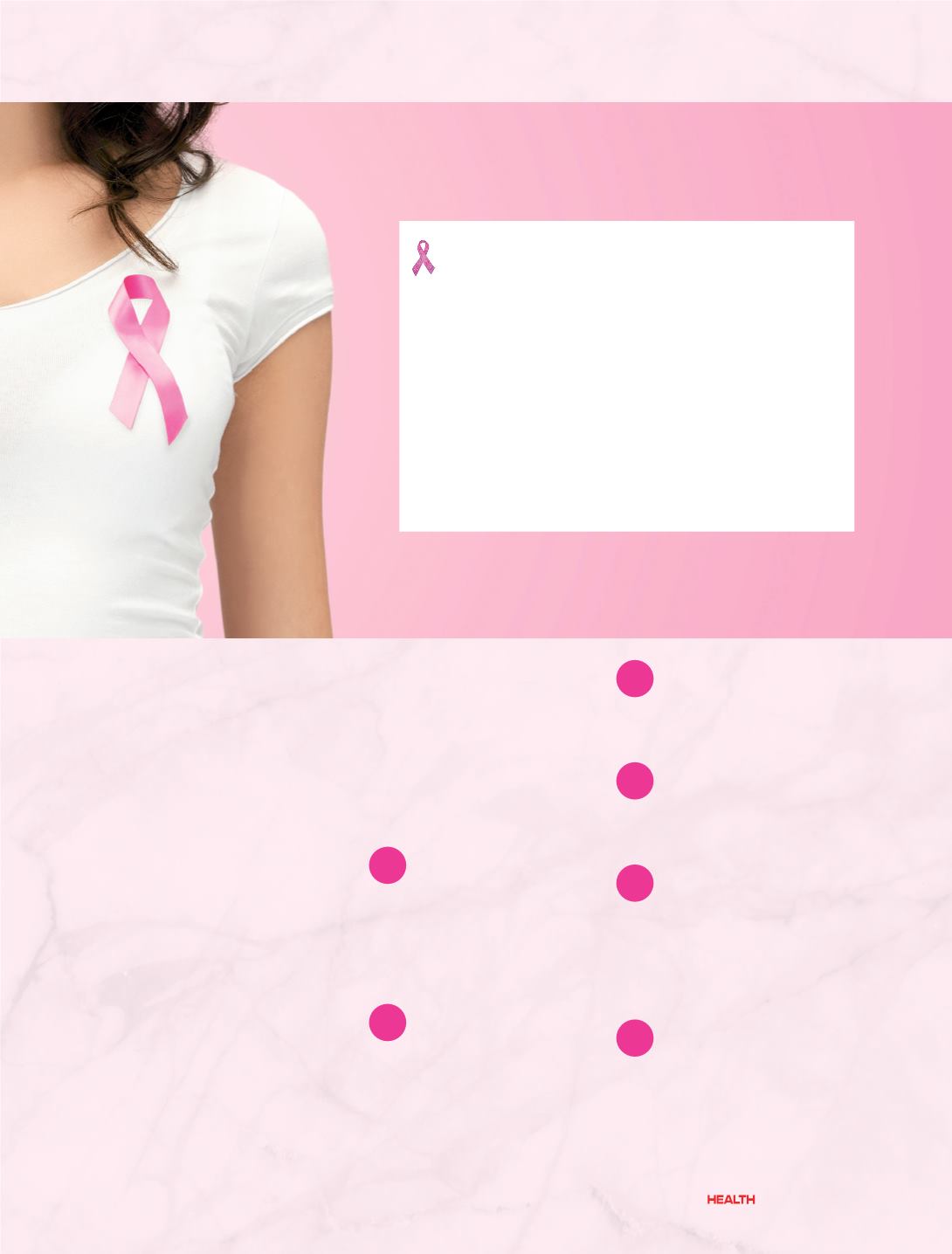

at any fixed time of the month.
Lactating women should also
follow the same, only they should
do the examination after emptying
the breast. Women who have a
breast implant should also do a
regular self-examination.
How do I
performmy BSE?
1
Stand or sit undressed from
the waist up in front of a full-length
mirror with your arms relaxed at
your sides. Get to know how your
breasts look; even small visual
changes may be an important sign
of a problem.
2
Compare your breasts while
turning from side to side. Look for
any changes in breast size, shape,
skin texture or color including
redness, dimpling, puckering or
retraction.
Risk factors
These include a personal history of
breast abnormalities and age, since
the risk of developing breast cancer
increases with age. The majority of
breast cancer cases occur in women
older than age 50 as well as the
age at menarche (first menstrual
period). “Women who had their
first menstrual period before age
12 have a slightly increased risk of
breast cancer and also the age at
the woman’s first live birth and the
family history of breast cancer,” Dr.
Dmitrieva explains.
Breast Self-
Examination (BSE)
A breast self-examination has to
be done at a regular interval. The
duration depends on your own
menstrual cycle as the breast is
more soft and easy to be checked
about five to seven days after the
start of the cycle. In women who
don’t have a cycle it can be done
3
Look for any nipple changes and
place your hands on your waist and press
inward, then turn from side to side to
note any changes.
4
Place your hands at your waist
and bow toward the mirror, letting your
breasts fall forward. Note any changes in
breast shape.
5
Nipple discharge can be an
indication of a problem. Also feel above
and below your collarbone for pea- and
bean-sized lumps or thickening. Check
for lumps or thickening under your arm.
For the next steps, lie down
1
Place a pillow under your left
shoulder. Bend your left arm behind
your head and reach across with your
right hand to your left breast.
Genes
For women with two or more first degree relatives, risks
decrease with age at first live birth, tells Dr. Dmitrieva. “Breast
cancer amongst first-degree relatives--sisters, mother, and
daughters--is also a risk factor since having one or more
first-degree blood relatives who have been diagnosed with
breast cancer increases a woman’s chances of developing the
disease,” she says. “Another risk factor is breast biopsies as
women who have had breast biopsies have an increased risk
of breast cancer, especially if the biopsy showed a change
in breast tissue, known as atypical hyperplasia.” Other risk
factors are age at menopause, use of birth control pills, high
body mass index, a high-fat diet, alcohol, radiation exposure,
and environmental pollutants, and use of hormone therapy.
17
Sep/Oct 2015















